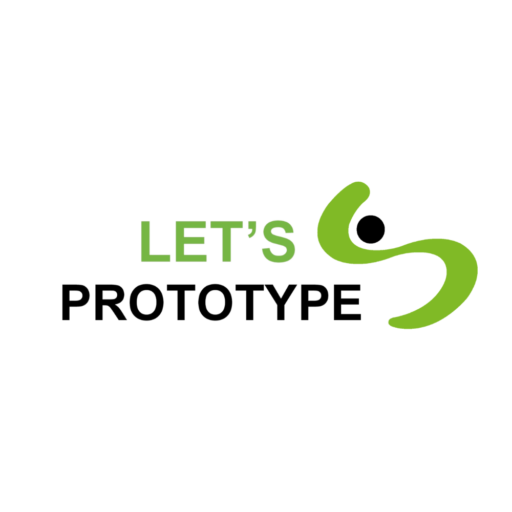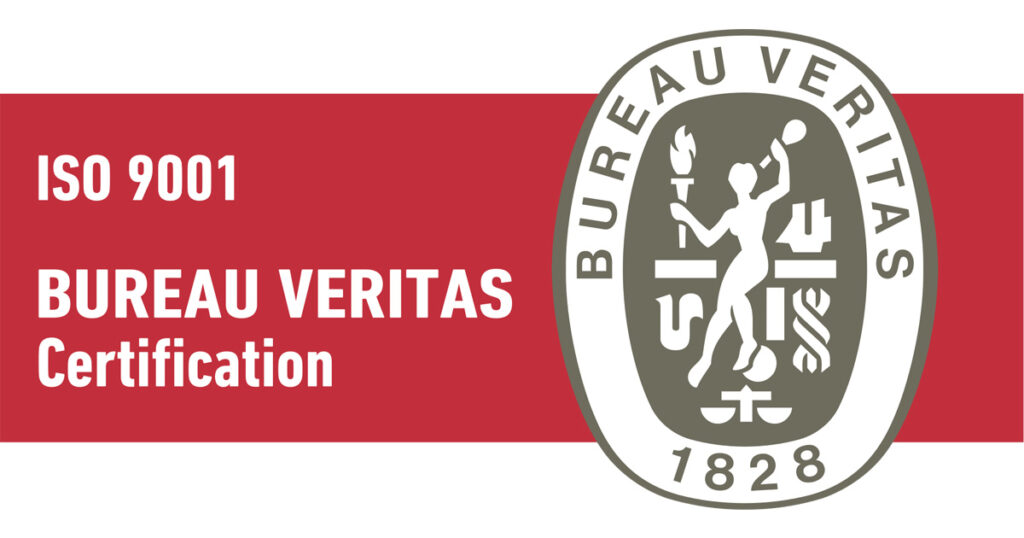Types of patents of inventions products ideas
Before registering an invention, discover the types of patents and the benefits each one offers.
-
Let's talk about your invention
Book Appointment
-
Inventor's Guide
Get your Guide now
3 tipos de Invention Patents
There are several types of patents or intellectual property protection methods useful to protect an idea or invention. It is impossible to define the best type of patent for an invention without knowing the technical details that highlight the true innovation claims.
Many companies encourage us to register the patent of an invention before conducting the necessary engineering studies. This strategy can jeopardize the correct choice of the method to protect the idea.
Below, we present the main methods of protecting inventions, or types of invention patents. Choosing the wrong types of patents for each invention, to save money at the beginning of the process, can doom the product development cycle to failure.
Los inventos pueden protegerse a través de diferentes métodos: Industrial Design, Utility Model o Patents.
Criteria | |||
Duration | 25 years (Renewable in periods of 5 years) | 10 Years | 20 Years |
Innovation requirements | Aesthetic, geometries, shapes... | Weak | Strong |
Approval process | Does not require substantive examination | Does not require substantive examination | Requires substantive examination |
Taxes | 78 € | 86€ | 1200€ |
Market Price | Between €300 and 500€ | Between 1500€ and 3000€ | Between 7000€ and 15000€ |
Approval likelihood | 97% | 88% | 48% |
Ease of internationalization | + | – | + |
Summary of the main types of patents
What is protected by an Industrial Design?
With the registration of an Industrial Design, the aesthetics, geometry, and changes in the shapes of a product are protected, which in turn, become a substantial improvement for the users or customers who will use your product in the future.
If you have an idea for an innovative product that consists of changes in shapes that in turn allow the product to function more efficiently or be used more easily, registering an Industrial Design is likely the most advisable option in your case.
By registering an Industrial Design, you prevent other competitors, inventors, and companies from commercially exploiting a product that resembles in shape and aesthetics to the one you have invented.
Lamentablemente, en muchos casos donde es recomendable registrar un Diseño Industrial, asesores de la propiedad intelectual recomiendan, en su lugar, registrar un Modelo de Utilidad. Esta decisión no ayuda al inventor, pero tiene mejores márgenes económicos para los profesionales que asesoran.
What is protected by a Utility Model?
With the Utility Model, the configuration of systems that allow for product improvement is protected at the national level and only for 10 years, provided that these changes do not focus on the form, geometry, or aesthetics of the product. In these cases, it would be more advisable to protect it with an Industrial Design.
Intellectual property advisors typically recommend the Utility Model in cases where a Patent could be applied for. However, since the Patent is more expensive, the probability of a sale for the inventor versus the effort required to face rigorous examinations by the Patent and Trademark Office makes it a less frequent option.
If you believe you have truly improved a product or have an innovative idea, and you would prefer to have the opinion of a patent expert, you can contact us.
¿Qué se protege con una Patente de Invención?
Patenting an invention is the most thorough and serious method of innovation protection you can choose. Large companies and buyers of innovative inventions prefer to negotiate and acquire patents rather than Utility Models. For this reason, before protecting with alternative methods, you should consider the possibility of registering an Invention as a Patent.
The patent registration of an invention not only protects aesthetic changes but also safeguards all the innovative elements that allow for improvements applied to an existing product or a new way of solving a common problem in the daily lives of users or in the procedures of companies and industries for 20 years.
Tiempo de protección de las patentes de inventos.
Considering the duration period of the different methods to protect an invention, there is no doubt that Patent and Industrial Design are the most recommended methods of protecting inventions.
In the specific case of Industrial Design, it's true that it involves a somewhat more cumbersome process, as the inventor must renew the protection every 5 years and therefore, go through a procedure that is quite simple, and can even be done online. This slight additional effort is entirely compensated, as with an Industrial Design, we can protect the invention for 15 years more than the maximum time allowed for protection of a Utility Model.
Requisitos de Innovación según los tipos de patentes de inventos.
Persistently, we are led to believe that to obtain a patent, there can be no prior art for the invention and that it has to be a radical and unknown innovation. This is not true!
If you propose changes or improvements to an existing product and these changes result in considerable improvements, it's very likely that you can register a patent. However, for convenience, they may insist otherwise.
In the case of the Utility Model, according to the Spanish Patent and Trademark Office, innovation can be more modest; however, it's true that Patent Offices like the one in the United States do not conceive or accept this type of method to protect an invention.
Procedimientos de aprobación de las patentes de inventos según cada tipo. Pasos del examen de las patentes.
The first thing you need to know when you need to patent an invention is the concept of substantive examination.
The substantive examination is the analysis conducted by experts at an official patent and trademark office regarding the level of innovation of an invention. This study is based on the claims of innovation, which are the points declared as innovative elements in the descriptive specification of a patent.
There are two types of procedures to register invention patents:
Substantive Examination: Only in the case of invention patents does the official office where the patent application is submitted have accredited human resources to study the prior art of the invention at both national and international levels. Therefore, these professionals determine whether your invention can or cannot be patented. The substantive examination of patents is the most rigorous method for protecting an invention patent.
Publication and Opposition: In the case of Industrial Design and Utility Model, substantive examinations are not conducted. Therefore, the patent office is not responsible for ensuring that your invention is truly innovative. According to this evaluation method, the patent office only assesses whether the description provided by the inventor or the intellectual property advisor meets the required formalities. If the document is correct, the invention is published in the Official Gazette of Patents and Trademarks. If no opposition is filed by any inventor within 60 days, the inventor will be granted their title of protection for the Industrial Design or the Utility Model.
Taking into account the rigor of the examination methods that can be applied in a patent and trademark office, it is most advisable to protect an invention by filing a patent application instead of an Industrial Design or Utility Model.
Fees and Prices for the different types of invention patents.
To define the price of a patent, we must consider that there are two clearly differentiated concepts:
Registration Fees: The official fees for registering an invention are the charges levied by the government, specifically the patent and trademark office, for granting the inventor the intellectual property rights to their invention.
Market Price: The market price is determined by the fees typically charged in the market by patent attorneys or intellectual property advisors for studying the prior art of an invention, preparing, and filing the patent application.
The price of a patent consists of the sum of the official fees charged by patent offices and the market prices typically charged by advisors.
Taking into account the data provided earlier in the comparative table, it is much more advisable to protect an Industrial Design or obtain a Patent than to opt for a Utility Model. As you can see, the economic margin of a Utility Model is much wider than that of other methods of protecting an invention. Perhaps that's why it is the one most recommended by intellectual property advisors.
2020 | 2021 | 2022 | |
Applications for Industrial Designs | 1.495 | 1.329 | 1.194 |
Applications for Utility Models | 3.419 | 3.059 | 2.596 |
Patent Applications | 1.483 | 1.361 | 1.231 |
2020 | 2021 | 2022 | |
Approved Industrial Designs | 1.456 | 1.325 | 1.118 |
Approved Utility Models | 2.373 | 3.288 | 2.260 |
Approved Patents | 588 | 671 | 666 |
Approval likelihood | 2020 | 2021 | 2022 | Average |
Industrial Designs | 97,39% | 99,70% | 93,63% | 96,91% |
Utility Models | 69,41% | 107,49% | 87,06% | 87,98% |
Patents | 39,65% | 49,30% | 54,10% | 47,68% |
As can be seen, it is much more likely that the patent office will approve an Industrial Design (96.91%) or a Utility Model (87.98%) than a full Patent (47.68%). However, the invention patent is the safest method of protection. Hence the rigor with which these applications are evaluated.
Protección internacional de patentes de inventos según los tipos de patentes.
The ability to patent an invention internationally is one of the main concerns of an inventor.
In the case of Industrial Design, you must understand that it is a method of protecting inventions recognized by all patent and trademark offices worldwide. Therefore, the process of internationalizing an Industrial Design is entirely feasible and relatively straightforward.
In the case of Invention Patents, it is also a method of international protection recognized by all patent offices worldwide. For this reason, if your invention has passed the rigors of substantive examination, it is highly likely that your patent can be approved in other countries around the world.
In the case of Utility Models, it is a method of protecting inventions that is unofficial or not recognized in all countries. Major markets, such as the USPTO (United States Patent and Trademark Office), do not recognize or allow Utility Models to be protected. To register a Utility Model worldwide, you will need to convert the Utility Model into a PCT (Patent Cooperation Treaty), and then subject your invention to rigorous patent examinations in those countries where you intend to protect it.
If you believe that the invention has an international impact and you intend to commercialize it in multiple countries around the world, or if you plan to sell a patent, it is more advisable to register an Industrial Design or a patent. According to our experience, large companies do not view Utility Models positively.
Steps to apply for a PCT
PCT Filing: The inventor or their intellectual property advisor must submit the PCT application document to an Official Patent Office, in a single language, and must provide proof of having paid the applicable fees.
Official Prior Art Search: After the submission of the international patent application through the PCT, an official institution affiliated with the global office of patents and trademarks will conduct a prior art search. In this search, the "ISA" experts will analyze the innovation claims of the originating patent in order to assess the novelty of the invention.
First Global Publication: The specification used to apply for the PCT or international patent, after being analyzed and its background studied, will be published in the international invention disclosure files. This step will take place 18 months after the PCT application date.
Optional Analysis: The inventor or intellectual property advisor may request an optional analysis of the PCT. This is a secondary and thorough study on the patentability of the invention intended for international protection.
Patent by Country: As previously explained, whether through the ordinary method of the Paris Convention or via the PCT procedure, the registration of an invention in multiple countries must be requested through the examination of the patent in each country where protection for the invention is sought. Therefore, at this stage, the inventor must choose the countries where their invention will be examined.
Intended protection time of a PCT
The PCT is not an international patent but a streamlined procedure that allows for some savings on the costs of adapting the patent specification that the inventor intends to register in certain countries. Indeed, once initiated, this procedure maintains the priority of the patent in question for 30 months in any country that is part of the agreement. However, the PCT itself is not a patent and does not guarantee that the patent will be approved in the countries of interest to the inventor.
Cost of a PCT
Filing a PCT usually costs between $5,000 and $8,000. The PCT is not an international patent but a necessary procedure to protect an invention in other countries. It is important for the inventor to always keep in mind that, even with an approved PCT, in 30 months, they must choose the countries where they wish to register their patent and, from that moment, will need to pay the internationalization fees for the patent in each destination.
Therefore, the registration of an international patent will have two parts and, in turn, two blocks of costs for the inventor. The PCT procedure and the patent procedure in each country chosen by the inventor.
Approximate costs of the PCT
PCT Procedure | Patent by Country |
Filing: €1300 | Translation expenses: between €500 and €1,000 |
Prior art search: between €400 and €2,000 | Filing fees: vary by country. |
Receiving Patent Office transmission fee: €200 | Patent Maintenance Fee by Country |
Patent Attorney or Consultant Fees. | Patent Attorney or Consultant Fees. |
Calculate the Value of Your Patent
Are you ready to find out the estimated value of your Patent or Utility Model?
What are invention patents useful for?
Exclusive Right Over an Invention
If you become the holder of a patent for an invention, you will be able to commercially exploit the invention exclusively. Just as you read, invention patents allow you to be the only one authorized to exploit your idea.
Monetizing an Invention
Invention patents allow you to develop multiple business models around your invention. You can sell your products directly, partner with potential industrial collaborators, or charge for the exploitation rights of your patent.
Securing Funding for an Invention
It can't be said any louder, but it can be said clearer: Invention patents are NOT sufficient to capture the interest of investors or industrial partners. It is crucial that the patent is always accompanied by a working prototype resembling the final product. Presenting your invention solely with the patent is a waste of time and money.
Let's talk about your invention
Don't waste your money, register a patent only if necessary. Book a free meeting now with a patent and invention expert.
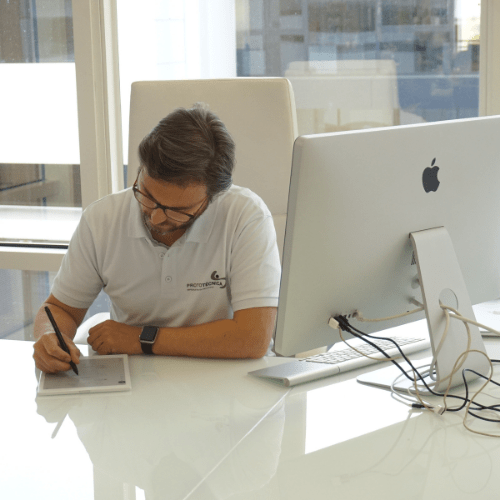
IDEA
We will analyze and document your idea for free. Also, if you let us, we will give you our vision as business consultants.

BACKGROUND
We identify patents similar to your invention or teach you how to do it for free.
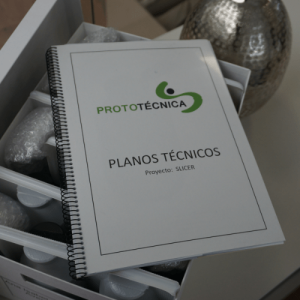
DOCUMENTS
We will prepare together with you the necessary documents to patent your invention. We will select the form that best suits your case.
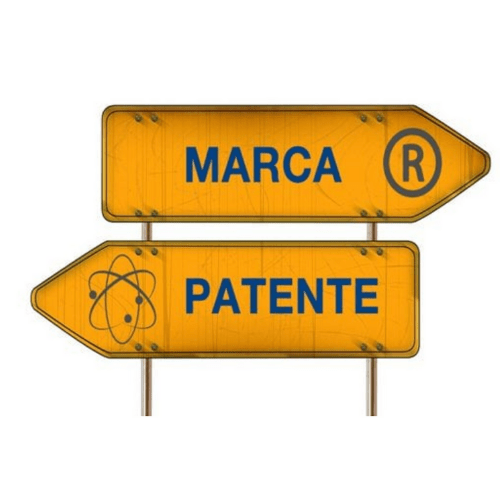
PATENTS
We present and monitor the entire process, until you get your patent. We will accompany you at all times.
Our business is not to patent your invention, it is to make it a reality
Registering patents on inventions has become big business. But it's not ours. In Let's Prototype you will find an ally to turn your idea into a profitable business.
Steps to Manage Invention Patents
Analysis of the Idea or Invention
If you want to assess the feasibility of an invention and its business potential, we will conduct an analysis of product sales or similar inventions on major platforms, both in Europe and in the United States.
We can also assess the technical feasibility of an invention. We will determine the electronic components and forms that would allow achieving the functions and improvements you propose. This way, we can determine if an invention is viable.
The team of engineers and business and marketing personnel will work together on designing the preliminary strategy to protect or patent the invention in question.
50% of the inventors working with Let's Prototype are individuals or small businesses. For this reason, we always work with fully closed budgets in all cases. It is essential for us that clients have a complete understanding of the economic impact of the invention's development and patent strategy.
We want to bring your ideas to life
CATALOG OF
PROTOTYPES
You can now access over 30 examples of prototypes designed and manufactured in our lab
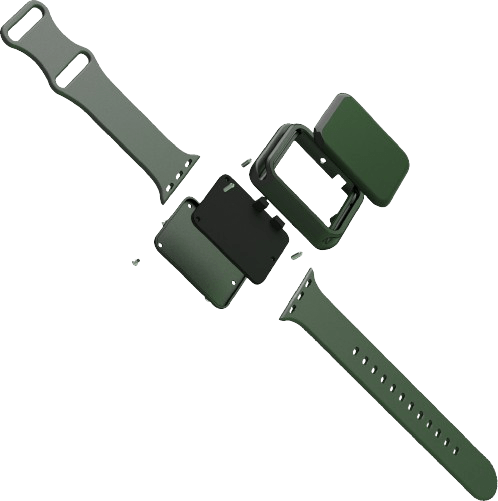
Background Study of an Invention
How to know if an invention already exists? The truth is that, through a background study of inventions, it can be determined whether the invention is registered or patented, both in the inventor's country of origin and in other countries. But, even if an invention is not patented, it may still exist. It is key to combine the search for background of an invention in patent records but also on commercial platforms.
The identification of invention patents that could affect the possibility of applying for a patent is carried out through three fundamental methods:
Method A – Semantic study.
Method B – International Patent Classification Codes.
Method C – Study of headlines
Do you want to conduct the search on your own?
Free Download: Instructions for Searching Patent Backgrounds for Inventions.
Patent Application Documentation
Taking as reference the analysis of our engineering team, as well as the main conclusions of the manufacturing process of the your working prototype, we will write the necessary documentation to formally file your patent application. It is relevant not to skip any steps. If there is no working prototype, we can hardly obtain an effective patent.
In some cases, due to the characteristics of the invention and its commercial potential, the patent application is filed after the completion of the basic engineering project. In this process, the instruction manual for manufacturing the prototype is determined, and the systems, designs, components, and any element relevant to the patent documentation process are identified.
In the case of Industrial Design applications, we can prepare, under the guidance of a licensed attorney in the United States and experienced in Europe, the necessary documentation, blueprints, and sketches."
In the case of Utility Models, although we discourage them in many cases, we can also help you prepare the memorandum. Only if we see it appropriate due to the commercial strategy and characteristics of the invention
Presentation and follow-up
The hard part will already be done; in this section, we will take care of the administrative procedures to file your patent. We will consider every detail to make it comprehensive yet precise, so it can truly meet your expectations and business needs.
If necessary, our team will respond to any inquiries that the corresponding Patent and Trademark Office may make.
Frequently asked questions
What is a patent?
The patent is a title, much like a property deed, that certifies the inventor as the owner of the invention. This ownership prevents other individuals or companies from having the right to commercialize the patented invention. Inventor, it's important for you to know that these rights are limited in time.
What is the risk of a patent?
While it is true that being the holder of invention patents can leave you somewhat at ease, it is also true that it has some associated risks. If you take a look at the official information, you will be able to identify that in the description of your patented invention, sufficient information must be provided for an expert to execute it. This, of course, reveals relevant secrets about your invention or product.
Is it mandatory to manufacture the invention?
It is highly recommended that before applying for the patent, you manufacture a working prototype. There are several reasons:
- When you obtain the patent for your invention, you will have a period of approximately 3 years to exploit the patent. Of course, it can be commercialized by you or through a company or person to whom you give these rights. However, that's why it's so important to have a prototype before protecting your invention; this way, you will save time.
- Although it may seem incredible, there are many invention patents and especially Utility Models that are not technically viable. Therefore, patenting an idea without it being fully validated and optimized by a specialized product development team can be a very serious mistake
- Imagine that your invention is viable, and therefore, you decide to patent an idea without having it validated by a development team or without having manufactured a functional prototype. After the patent is approved, a team of product designers finds a more efficient and economical way for your idea to work... Patents are not editable. Therefore, your patent, from that moment on, would have no meaning.
What is an innovation claim?
This is the fundamental point of invention patents. The claims are the distinguishing features of your product. When analyzing your competitors' patents, you should pay special attention to these arguments. At Let's Prototype, we tabulate these characteristics and thus find 'gaps' or opportunities to innovate in the prototype and obtain very secure patents.
How long does it take to obtain patents for inventions?
Like any administrative procedure, there are very well defined deadlines and steps. The good news is that they are all public, so we will have the opportunity to do it ourselves if we think we are capable. The average time is usually between 12 and 36 months. More than the time that elapses from the time it is filed until the patent is obtained for an invention, I recommend you pay the greatest attention to the process of background study and prototyping. These stages are the key to the process.
In the United States, there are procedures that allow obtaining patents within 6 months after the application.
Methods for protecting inventions
Patents are not the only method or tool available to you to protect your inventions. It is true that it is the most complete tool, as well as the most complex and expensive. The truth is that the methods of protection of inventions are neither better nor worse, they are or are not adequate for each case.
Bringing an invention to the market and succeeding is neither easy nor accidental
After working closely with over 500 inventors from Spain and the United States, we have prepared an inventor training program, specially tailored for you.
Inventor Training:
Program:
Program: Patent your Invention
The time to bring your ideas to life is now. We accompany you throughout the entire process: from idea to product.
San Juan Ingenieros, S. L, is the owner of the domain www.letsprototype.com, and in accordance with the General Data Protection Regulation (EU 1679/2016), we will process your data exclusively to handle your information request. You have the right to rectify or request the deletion of your data at any time via hello@letsprototype.com.
